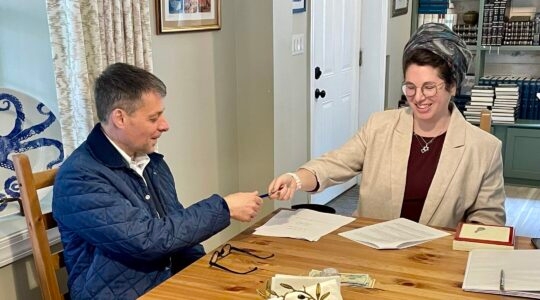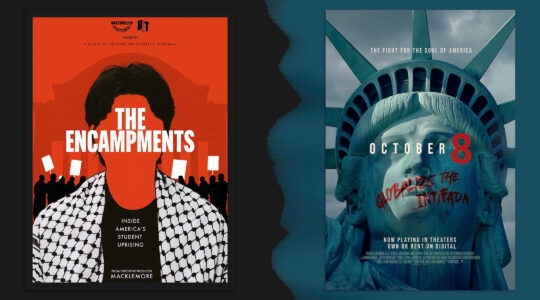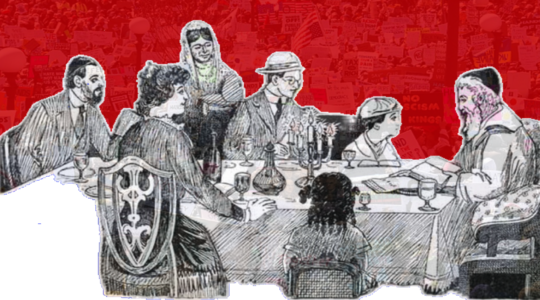At the recent national convention of the United Synagogue of Conservative Judaism, Rabbi Ed Feinstein was reported to have said, “The house is on fire,” as a way to signal to Conservative congregations that the hour is too late for synagogues to think about modest changes in the way they do their business. Since the 2000 publication of my book, “Finding a Spiritual Home: How a New Generation of Jews can Transform the American Synagogue,” I have worked with many congregations and rabbis across the denominational spectrum about strategies to move their institutions from the current paradigm — the synagogue-center — to a new paradigm, the synagogue-community, which is far better suited to address the changing reality of American life and the next generation of American Jews.
The good news is that dozens of congregations have been moving in this direction aided by many national and local initiatives among them: STAR (Synagogues: Transformation and Renewal), Synagogue 3000, the Legacy Heritage Innovation Fund and the Synergy project of UJA-Federation of New York. While not enough synagogues have recognized the need to change, national rabbinical associations and congregational unions are well aware of the precipitous declines in synagogue affiliation, and they are acting with a sense of urgency that I have not seen in my lifetime.
There are four core principles that are essential to move a congregation towards the synagogue-community model, and they are set forth in great detail in “Finding a Spiritual Home.” Like with all institutional transformation strategies, those principles require diligent attention over two to three years before they will start to produce results. But I often am asked: “What can we do in the short term to begin to build some energy in our congregation as we start the longer-term process of systemic change?” To that end I propose a three-part synagogue stimulus plan, shock therapy to move congregations out of the stasis that threatens to make them increasingly irrelevant to American Jewish life.
Rabbinic Renewal: A community is only as dynamic as its spiritual leader. Many rabbis are not spending the most of their time on the things that they are passionate about. At the same time, rabbis spend enormous amounts of time planning for and conducting religious services. We did not need the Pew Research Center survey to tell us that few non-Orthodox Jews attend religious services in synagogues with any regularity. Even as there are emerging around the country amazing alternatives of joyful and soulful worship, it has yet to manifest itself in most American synagogues.
I suggest that synagogues reduce by 25 percent the amount of time their rabbi needs to lead services. On that one Shabbat a month, the community should tap the talent of its members to create a lay-led service, even if it is dramatically different from what happens the other three weeks of the month. It is one way to generate some of the energy that one witnesses when attending an independent minyan and bring it into the synagogue. In turn, the rabbis should be charged with redirecting that newfound release time to any initiative around which they are passionate that might attract under-engaged Jews into the orbit of congregational life, whether that happens in the building or outside of it.
Diversify the Program: One hundred years ago Mordecai Kaplan argued that Jews are a religious civilization and that worship represented only one manifestation of that civilization. The Pew study validates Kaplan’s prescient analysis. Jews love being Jewish but fewer and fewer of them want to express it in religious ways. Congregations can and should be the main retail outlet where Jews can explore the rich heritage of our people.
Once a month, on Shabbat morning, congregations should offer a wide array of activities through which Jews can deepen their engagement with Jewish life and learning. Let there be classes on Bible, rabbinic texts, Musar, contemporary Israel, Jewish fiction and contemporary Jewish music. Run workshops for families on how to celebrate an upcoming holiday, how to develop Shabbat rituals, how to raise well-adjusted children or how to create a family that effectively conveys the values chesed (compassion), kedusha (sanctity), tzedek (social justice for all) and tzedakah (sharing of our resources to support good work in the world).
Once down this path the options that emerge from the community itself are limitless. In my own congregation we double our attendance on those Shabbatot when we offer such options, and most workshops are led by congregants. Everyone, including those who attended the worship service, then joins together for a potluck lunch and the community feels that Shabbat is at the center of our communal experience. The rabbi should be central to these optional activities, both in supporting those who lead them and offering an option herself/himself that they are passionate about.
Jewish Renaissance Innovation Fund: Synagogues must serve a constituency broader than their current membership. I suggest that congregations set aside 5 percent of their budget to create an innovation fund offering mini grants to anyone, member or not, who wants to develop a new Jewish initiative.
The initiative should then be made available to both members and non-members in that congregation. The monthly Shabbat program mix is the ideal venue for the congregation to benefit from this investment. Equally important is that young people, who want to reinvent their Judaism, will feel supported by and increasingly appreciative of the sponsoring congregation. Right now, they are nowhere to be found on the synagogue landscape.
There are dozens of ways that these innovations can roll out. Each is a catalyst to help synagogues re-tool themselves for the new social reality that we live in and for the next generation of American Jews. There is no time to wait. Let the conversation begin.
Rabbi Sid Schwarz is the director of the Clergy Leadership Incubator (CLI), a program sponsored by Clal: The National Jewish Center for Learning and Leadership, training visionary spiritual leaders for the American Jewish community. He is also the author of “Jewish Megatrends: Charting the Course of the American Jewish Community” (Jewish Lights). A version of this column was delivered at the recently held United Synagogue national convention.
The New York Jewish Week brings you the stories behind the headlines, keeping you connected to Jewish life in New York. Help sustain the reporting you trust by donating today.




